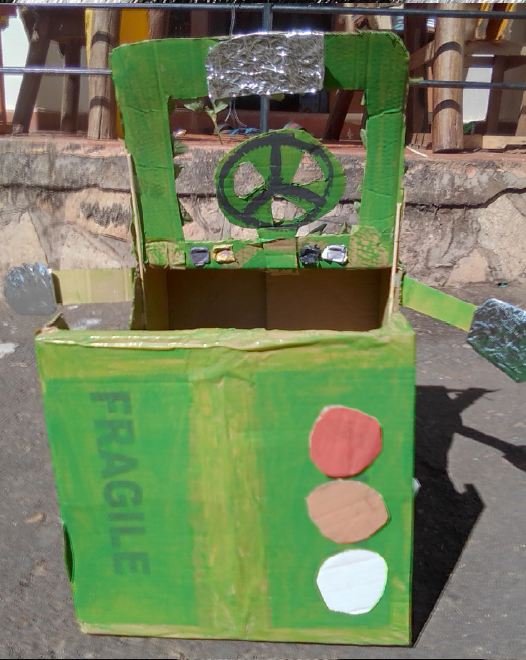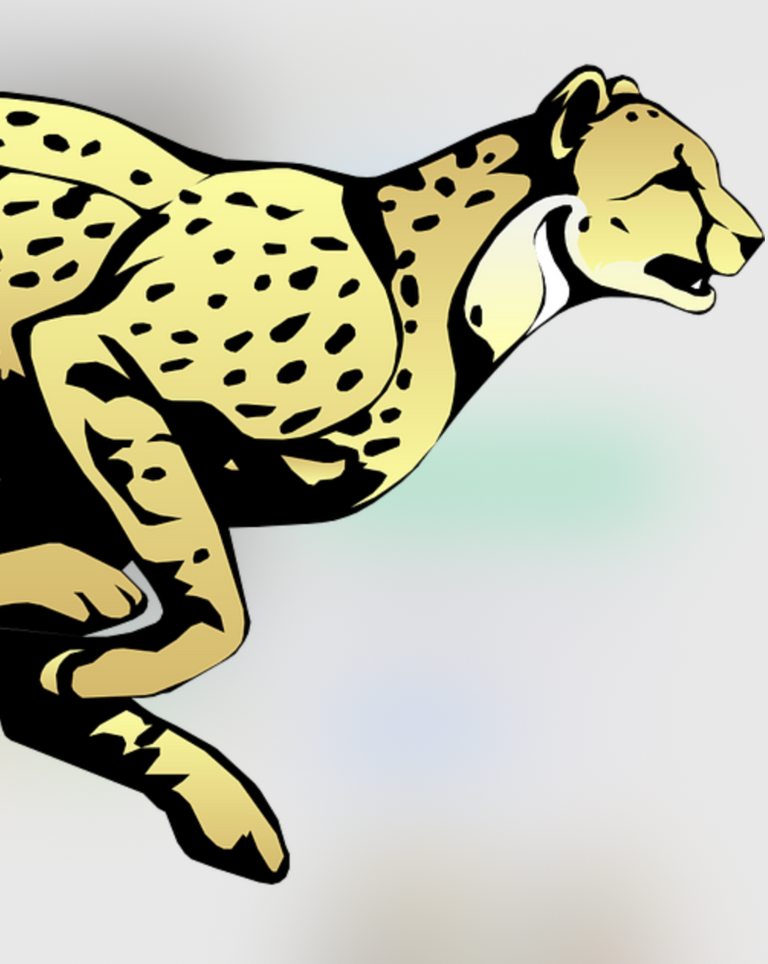8 Safari and Animal Themed Activities for Kids
Have fun with these safari themed activity ideas including crafts, sports, scavenger hunt and science experiments.
Make a Safari Car
If you’ve got a large box (big enough to sit in) then brilliant, it’ll be nice and simple for you to build a safari car so that you can get a good view of the animals.
1 - Tape all the sides down with packing tape or masking tape.
2 - Use a sharp knife to cut a semi - circle on each side of the box to make the doors (go about half way down)
3 - Create a windshield by cutting a flap out of the lid. (leave the front part connected to the ‘hood’)
4 - Cut out a rectangle in the middle to be the windshield
5 - Glue cardboard circles or paper plates on to be wheels.
6 - Attach something round and yellow to the front for headlights. I painted some cupcake cases, but you could use anything, including cups if you want it to stand out more.
7 - Make a steering wheel out of card or a paper plate and glue it on.
7 - Decorate with paint/ pens/ whatever you have handy. Try painting on some stripes to look like a radiator grill, and adding a strip of foil to look like a bar. Try sticking on a funny licence plate number. I painted Rafiki’s green and stuck on leaves to try and give it some camouflage. I made wing mirrors using foil and painted cardboard to be the lights at the back. I also removed dried out paint from the little squares in our art palette which made great buttons.

Make a Safari Kit
BINOCULARS
1 - Take 2 toilet rolls, and 2 strips of bendy cardboard. Tape the strips so that they join the rolls together.
2 - Decorate the binoculars how you want using tape, paint, crayons, pens etc. I used silver spraypaint and then used a black marker to add on some zebra stripes.
3 - Take some string or ribbon, and tape either end to the inside
of the top of each roll.
CAMERA
1 - Cut a small section of a cardboard tube, and stick it onto the
front of a small cardboard box to make the lens.
2 - Cut a small rectangle above the top of the lens, then make
another small rectangle at the back, in the same place so that you can see through both holes.
3 - Tape a bottle top on the top to be a pretend button.
3 - Use tape/ paint/ crayons/ anything you want to decorate it. I used silver spray paint and a black marker pen.
4 - Glue some ribbon or string on to the sides, long enough so that they can act as a strap.

Animal Scavenger Hunt
See how many of these you can find in your house. You can include animals in your books, DVDs, cuddly toys or even pictures from this pack that you’ve printed, or real animals if you have them! Draw a picture of any animals that you’re missing.
- Something stripy
- Something spotty
- Something with feathers
- Something that flies
- Something that swims underwater
- Something that has horns
- Something that eats plants
- Something that eats meat
- Something with scales
- Something that lays eggs
- Something that is very big
- Something that is very small
- Something that likes hot places
- Something that likes cold places
- Something with 2 legs
- Something with 4 legs
- Something with no legs

Racing Cheetahs
It’s time to find out who is the fastest, over the course of 10 races.
Give younger kids a head start over the older ones.
1 - Straight up race from the start until the end.
2 - Race backwards
3 - Race while bunny hopping (jumping with 2 feet)
4 - Tie up with a team mate for a 3 legged race
5 - Running on hands and knees (like a Cheetah)
6 - Race while hopping on one leg
7 - Roly Poly race
8 - Slither like a snake on your belly race
9 - 2 steps forward, 1 step back race
10 - Relay race. Hand over a stick between you and see how quick your team can be.

Activity Ideas for
Babies & Toddlers
1 - Get the playdough out, or make your own by mixing 1 cup of flour, half a cup of salt, then gradually add half a cup of water. When it’s mixed then knead it with your hands, adding in flour or water to get the consistency you want. Play with it white, or divide it into sections and mix in small amounts of food colouring to give you different colour playdough. A really easy animal for small kids to make is a snake, try playing with them to make lions, elephants,
giraffes.
2 - Feed the Elephant game Cut out an elephant face from cardboard with a wide open mouth, then attach the face to a bucket or card board box. Give your child grapes/ raisins/ other small things to try and throw into the elephants mouth to feed it lunch.
3 - Cut out paper into rough circles to replicate Elephants footprints, and stick them to the floor the right distance apart so that your child can stomp on them like an Elephant. For added fun, try sticking them on different textures (making sure that they’re not going to slip), like cardboard, fabric, carpet, bubble wrap, wood, and talk about how it made the stomping feel different.
4 - Make a sensory zebra stripe activity by getting a large tray, and squirting some shaving foam in there. Drop some black food colouring in there. Use a paintbrush, or something of a similar shape to mix it up into up and down marbled stripes. This is fun enough in itself, but for added fun, try laying some paper on top of the shaving foam to make a print. Take it off and leave it to dry for a few minutes before scraping the now dried shaving foam off to reveal your masterpiece, cut it out into the shape of a zebra.

Crocodile Water Experiment
13 species of crocodiles live in different countries around the world, in Africa, Asia, the Americas and Australia. They live near lakes, rivers, wetlands. Most of these places are freshwater, but some of them are saltwater areas. But do you know the difference?
Let’s do this experiment to understand a bit more.
Get 3 clear cups or glasses, put one cup of water in each. Put 1-2 tablespoons of Salt in 2 of the cups and stir until it's dissolved. This is now like the saltwater which is found in the ocean.
Drop a little food colouring into one of these saltwater cups, and a little into the cup without the salt in. Watch the different way the food colouring moves around the water.
Next, place an ice cube in the saltwater cup without food colouring, wait until it’s melted and then squeeze some food
colouring on top. Talk about how it moves through the cup. Fetch some other things to see how they float and sink differently in the fresh water or the salt water. Try things like grapes, tiny pieces of soap, raisins etc.
So, fresh water is very different to salt water, which is why Crocodiles have salt glands on their tongues which helps them to
get rid of the extra salt that their bodies don’t need, and enable them to survive in salt water.

Animal Yoga
1 - Stand like a giraffe eating something from the ground, with your legs out wide, bend down keeping your legs straight, and gently sway.
2 - Be a scary crocodile, resting on your hands and toes, push your body towards the sky (plank pose)
3 - Be an excited frog, bend down into a squatting position
4 - Stand like a flamingo, with your arms pointing to the sky, bringing one foot up onto your thigh (tree pose)
5 - Be a leopard stretching out after a good sleep, come down onto your hands and knees, tuck your head down and arch your back towards the ceiling. (cat pose)
6 - Be a hippo, still on all fours, rest your body on your legs, with your arms stretched out in front of you, and your head gently resting on the floor.(childs pose)
7 - Stretch out, laying calmly on your back, being whichever relaxed animal you would like to be. Be aware of your breating. (Corpse pose)

Take a (Virtual) Trip
It’s so easy to take a trip to the African plains from the comfort of your own living room.
Start off with watching these incredible 360 videos on youtube of elephants, lions, wildebeest, vultures, warthogs, monkeys, cheetah,
giraffe.
Take a seat on the safari vehicle and enjoy the ride. Make sure you watch it on the biggest screen possible, and take advantage of their 360 nature and look around you.
You can also check out these live webcams from inside some game parks in South Africa and Kenya

Feeling a Little Frazzled?
Here's a few things I've made that'll hopefully make your life a little bit easier, a little bit more fulfilled, or simply a little bit more fun. Check out these bits along with loads of other parenting aids on the link below.
Make your little mermaid's party perfect with these personalised printables including invites, signs, bunting, crafts and games.
You know what the kids need? An epic activity pack! And it should be filled with easy activity ideas, and stickers, and personalised!



